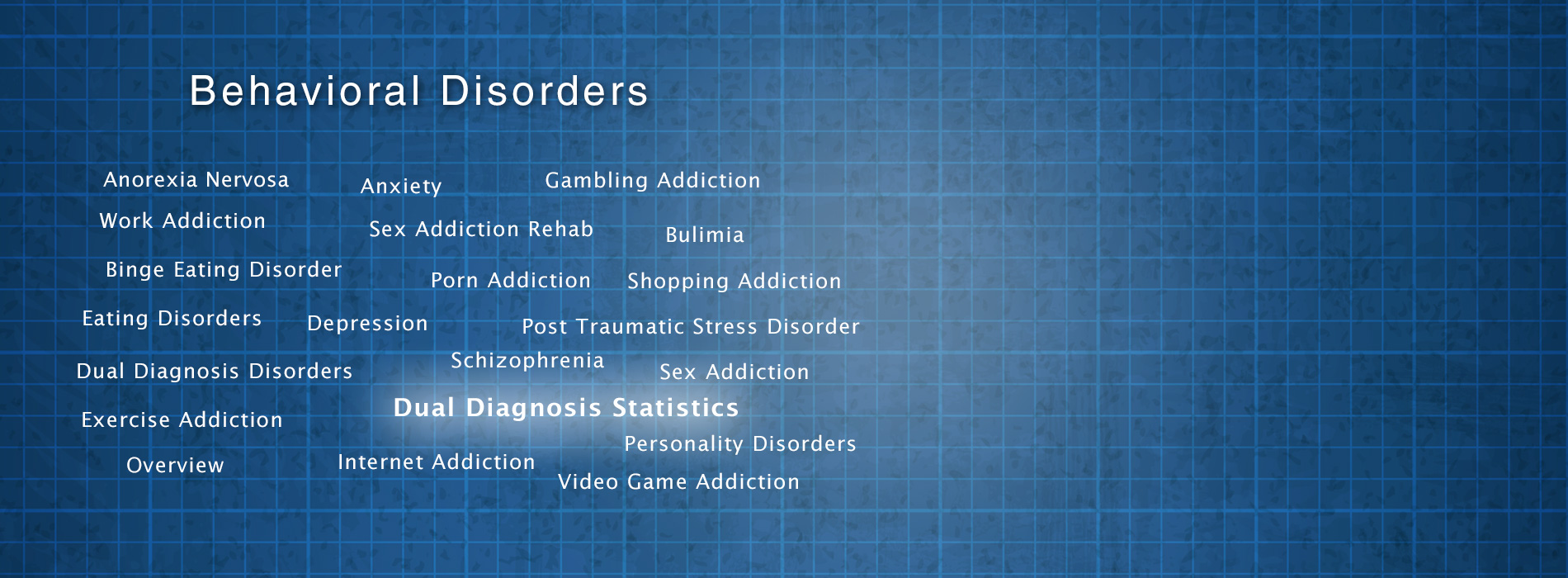Dual Diagnosis Statistics
Dual diagnosis is when a person has an underlying mental disorder as well as a substance abuse or addiction problem. To qualify for dual diagnosis, the mental disorder cannot be a result of the substance abuse, but the substance abuse may be a result of the mental disorder. Often, the substance abuse is due to the person attempting to self-medicate the symptoms of the disorder. Dual diagnosis can consist of any pairing of a mental disorder and a substance.
Somewhere around 17.5 million Americans live with some form of mental disorder within a given year. Around four million of these people also deal with a dependence on drugs or alcohol. Many of these people are functioning members of society – about 2.4% of America’s workforce is estimated to have a dual diagnosis. About half of Americans with dual diagnosis don’t receive any form of treatment, while 40% only receive treatment for one of the disorders (mental or substance abuse) and not the other. Alcohol is the substance of choice for over half of Americans living with dual diagnosis.
Certain disorders have higher rates of substance abuse than others. People living with schizophrenia and other psychotic disorders are significantly more likely than the general population to develop a substance abuse disorder. Around 47% of people with schizophrenia have had a substance abuse disorder at one time in their lives compared with around 5% in the standard population. The most common form of substance abuse among schizophrenic patients is nicotine – around 80% of schizophrenics are addicted to nicotine compared with 20% of the general population. Smoking cigarettes can make some anti-psychotic medication less effective and withdrawal can worsen psychotic symptoms.
ADHD sufferers of all ages are more likely to abuse drugs than the general population, most notably alcohol. Adolescents with ADHD are more likely to drink alcohol than their peers without ADHD at around 40% compared with 22%. Young adults with ADHD are more likely to drink excessively. This is theorized to be due to a combination of self-medication and the fact that ADHD and excessive alcohol use have similar risk factors. There has been no causal link found between ADHD patients who take stimulant medications and substance abuse.
Mood disorders also carry a higher risk of substance abuse. Around 16% and 18% of individuals with depression have problems with alcohol and drug abuse respectively. Drugs and alcohol are often ways to self-medicate depression and allow the individual to feel happy or hopeful in ways that they cannot without drugs. Bi-polar individuals have even higher rates of substance abuse, with over half of sufferers experiencing some type of substance abuse or dependence in their lifetimes. Increased risk-taking behavior is characteristic of bi-polar disorder, so individuals are more likely to try drugs than the general population. Like with ADHD, there are similar risk factors between mood disorders and substance abuse and individuals may be using drugs or alcohol to self-medicate.
Only a small portion of Americans with dual diagnosis receive treatment for both their mental illness and drug problem – around 12%. The most effective treatments for dual diagnosis addresses both conditions instead of just one.

